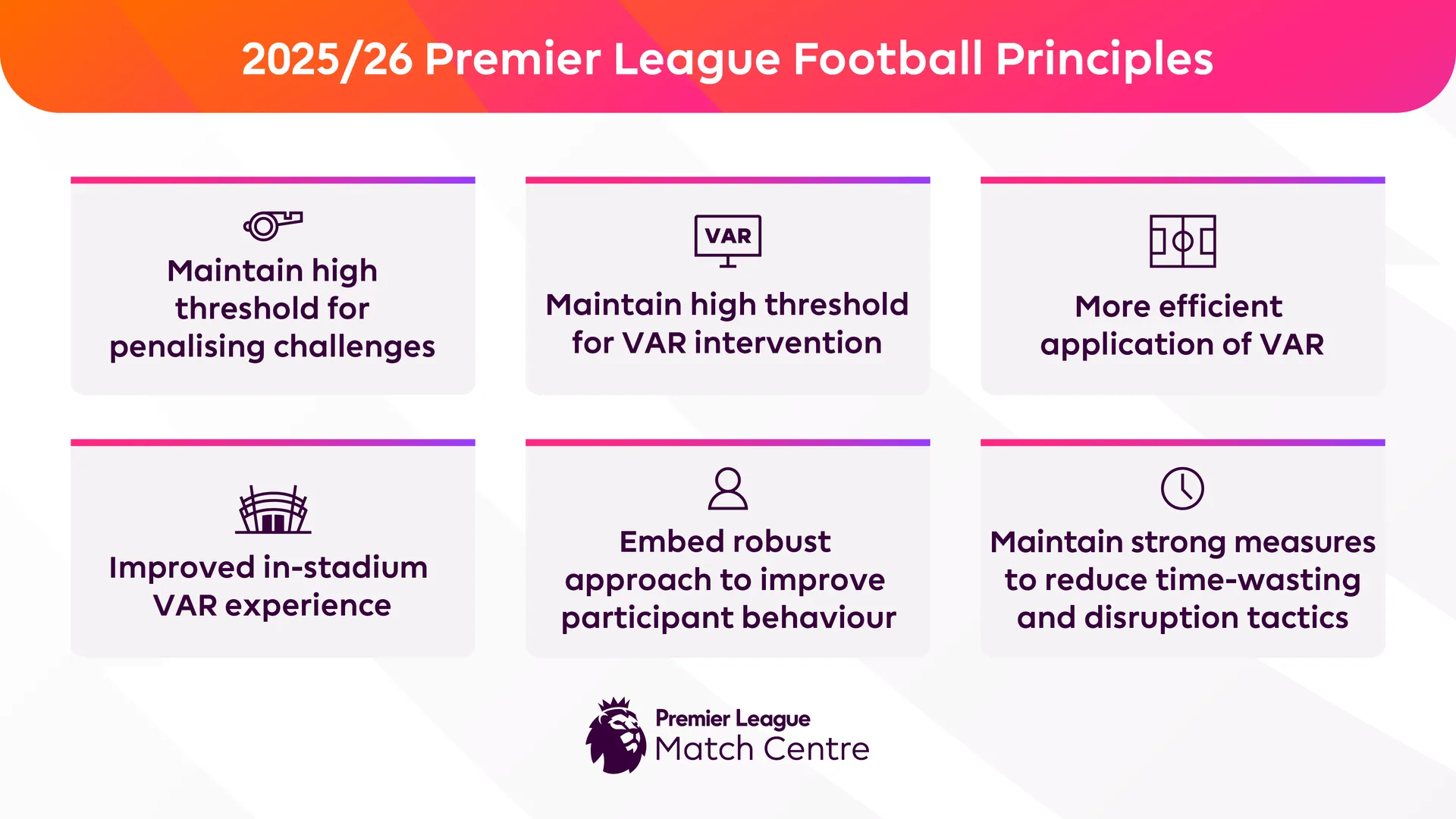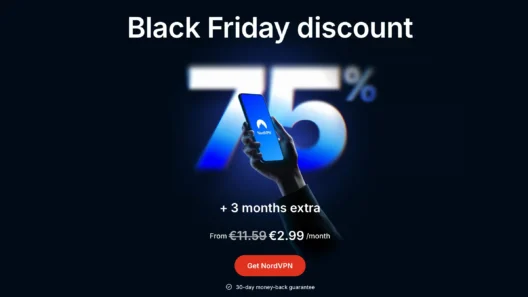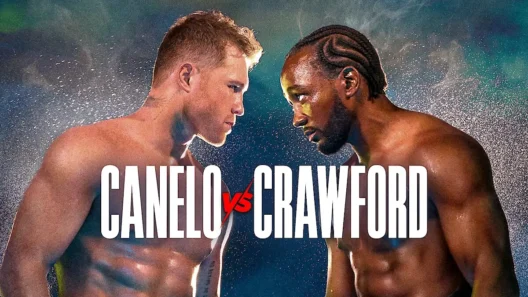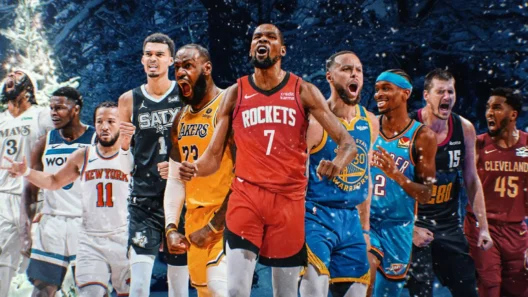Big shifts are coming to the world’s most-watched league. The 2025/26 Premier League season isn’t just tinkering with the details—it’s bringing in a sweeping set of rule changes aimed at speeding up the game, making decisions more transparent, and raising standards of respect across the pitch.
Whether you’re a die-hard fan or a casual viewer, here’s everything you need to know about how the new rules will change the way the Premier League is played and experienced.
The Game Is Changing: Why This Season Matters
Ask any fan what frustrates them about modern football, and you’ll hear the same complaints: time-wasting, endless VAR checks, player confrontations with referees, and the constant debate over fairness. The new rulebook is a direct answer to these issues, designed to deliver a faster, smoother, and more transparent experience—both for those in the stadium and the millions watching around the world.
Let’s break down what’s changing, why it matters, and how it could reshape the Premier League as a global “product”.

Where to Watch Premier League Anywhere: My Top 5 VPN Picks
If you want to watch the Premier League from anywhere in the world—whether you’re traveling, living abroad, or just tired of annoying geo-blocks—I highly recommend using a quality VPN. Over the years, I’ve tested dozens, and my personal top 5 are ExpressVPN, NordVPN, Surfshark, CyberGhost, and Private Internet Access (PIA).
Each of these VPNs delivers fast streaming speeds, strong security, and reliable access to UK-based platforms, so you never have to miss a single match. Whether you’re watching on your laptop, phone, or smart TV, these VPNs make sure you can enjoy every Premier League game, no matter where you are. Trust me, it’s a total game-changer for football fans on the go!
| 5 Best VPN for Premier League | Offer + Discount | URL |
|---|---|---|
| NordVPN | 77% off + 3 months free | Try NordVPN |
| ExpressVPN | 61% off + 6 months free | Try ExpressVPN |
| SurfShark | 87% off + 2 months free | Try SurfShark |
| CyberGhost | 83% off + 2 months free | Try CyberGhost |
| PIA VPN | 82% off + 2 months free | Try PIA VPN |
What’s New? Premier League Rules: 2024/25 vs 2025/26 (Quick Table)
| Rule | 2024/25 Season | 2025/26 Season | Key Impact |
|---|---|---|---|
| Goalkeeper Ball Holding | 6 seconds (indirect free-kick, rarely enforced) | 8 seconds (corner kick, visual countdown) | Faster tempo, less time-wasting |
| Talking to the Referee | Informal, frequent mass confrontations | “Captain Only” rule can be invoked by referee | Reduces referee pressure, clearer communication |
| Offside Decisions | VAR with manual lines; SAOT late in season | Full rollout of Semi-Automated Offside Technology | Faster, more accurate offside calls |
| VAR Announcements | No in-stadium explanation | Ref explains decisions to the stadium via PA | Better transparency for fans in the stadium |
1. Big On-Field Rule Changes: Every Second Counts
The 8-Second Goalkeeper Rule: No More Endless Time-Wasting
Starting this season, goalkeepers get eight seconds—no more, no less—to release the ball. This new rule replaces the old six-second guideline, which, let’s be honest, was barely enforced. Now, referees will count down the last five seconds with a raised arm, making it impossible to ignore.
The penalty? No more indirect free-kick chaos in the penalty area. Instead, the opposition gets a corner kick from the side nearest to where the goalkeeper broke the rule. This is a huge shift: instead of a rarely-given and often disruptive free-kick, you get a real, practical deterrent that actually punishes time-wasting.
Why the change? Even top referees have admitted the six-second rule was almost never enforced because it caused more trouble than it solved. A corner is a fairer, more visible punishment—and fans might finally see consistent enforcement. Of course, there’s skepticism: will refs really give corners for this? Some say it could be a game-changer, others expect “old habits” to die hard.
“Captain Only” Rule: Ending Player Pile-Ons
Referees have had enough of being surrounded by angry players. The new “Captain Only” rule gives them a tool: after a controversial decision, only the team captain can approach the referee for clarification. If anyone else joins in or behaves disrespectfully, it’s an instant yellow card.
If the captain happens to be a goalkeeper, the team must nominate an outfield player before kick-off to be the designated spokesperson.
It’s not a blanket ban—refs can invoke it when needed, especially during heated moments. The idea is to give refs a clear way to de-escalate tension and put responsibility on the captain to control their teammates. But as with all new initiatives, there are doubts about how strictly it’ll be applied—and whether it will really stamp out mass protests or just be another rule that quietly fades away.
Other Notable Rule Tweaks: From Penalties to Throw-Ins
- Double Touch on Penalties: If a penalty-taker accidentally hits the ball twice (e.g., slips and the ball hits both feet) and the ball goes in, the kick is now retaken—not disallowed as before. It’s a more forgiving approach for accidental slips.
- Offside from Goalkeeper Throws: The reference point for offside is now the last contact with the goalkeeper’s hand—not the first. This gives officials a clearer marker and more consistent decisions.
- Dropped Ball Fairness: The dropped ball is now always given to the team that last had possession or would have clearly regained the ball if play hadn’t stopped—removing the random “scramble” from previous seasons.
- Unintentional Technical Area Interference: If someone from the technical area (coach, sub, etc.) accidentally touches a ball clearly going out, it’s just an indirect free-kick—no card. Only intentional interference gets the harsh punishment.
2. Technology Takes Over: SAOT and VAR Transparency
SAOT: The Era of Semi-Automated Offside Calls
Premier League 2025/26 is the first season where Semi-Automated Offside Technology (SAOT) runs from day one. Using up to 30 special cameras per stadium, the system tracks thousands of data points on every player, generating a real-time 3D model to pinpoint offside lines and the precise “kick point” when the ball is played.
SAOT then suggests the offside line and moment to VAR, who checks and confirms. It’s still “semi”-automated because a human must verify player identity and other subjective factors.
This tech promises to cut offside reviews by about 30 seconds on average. But the rollout wasn’t flawless—during testing, a notorious FA Cup match saw an 8-minute delay that made headlines. After some teething problems and criticism about competitive fairness, this year will be the real test of SAOT’s reliability.
VAR Announcements: Stadiums Get in the Loop
For years, fans in stadiums have complained about being left in the dark during long VAR reviews, while TV viewers get replays and expert breakdowns. That’s finally changing. Starting this season, referees will announce and explain key VAR decisions over the stadium PA system—already trialed successfully in FA Cup and EFL Cup matches.
It’s all about transparency: fans in the stands will finally get instant explanations, making the experience fairer and more engaging. However, the league says it will still keep the bar high for VAR intervention—only “clear and obvious errors” will trigger reviews, to keep the flow of the game intact.
3. Off the Pitch: Financial Fair Play, New Faces, and More
PSR vs. SCR: The Financial Tug-of-War
Premier League clubs are still under the Profitability and Sustainability Rules (PSR), which let clubs lose up to £105m over three years. But a new “shadow” system, the Squad Cost Ratio (SCR), is being trialed. In future, SCR will cap squad costs (salaries, transfers, agent fees) at 70% of revenue for clubs in Europe, and 85% for others.
Why isn’t SCR in full force yet? Legal battles (notably Manchester City’s lawsuit over related-party sponsorship rules) and the looming arrival of an independent UK football regulator have put things on hold. This season is a transition period—a bit of a financial “wait and see”.
Other Notable Changes: The Face of the League Evolves
- New Teams: Burnley, Leeds United, and Sunderland are promoted—replacing Leicester City, Ipswich Town, and Southampton. Sunderland’s return means the fierce Tyne-Wear derby with Newcastle is back for the first time since 2015/16.
- New Match Ball: After 25 years with Nike, Puma takes over as the Premier League’s official match ball supplier—a big visual and commercial change.
- Everton’s New Stadium: Everton say goodbye to historic Goodison Park and move into their state-of-the-art Bramley-Moore Dock stadium.
- Homegrown Player Rule: No changes here—each club’s 25-man squad can include a maximum of 17 non-homegrown players.
Final Thoughts: The Future of the Premier League Starts Now
The new rules for 2025/26 aren’t just a list of tweaks—they’re a coordinated strategy to make the Premier League better: more watchable, more fair, and more respectful. The focus is clear: maximize live playing time, cut out time-wasting, and make tech work for the fans, not against them.
Will it all work? The real challenge will be consistent enforcement—especially with the “Captain Only” rule and the reliability of SAOT. But if these hurdles are cleared, this season could be remembered as the one that changed English football for the rest of the decade.














